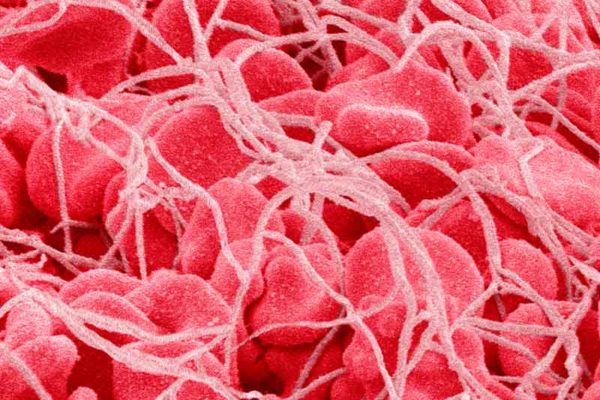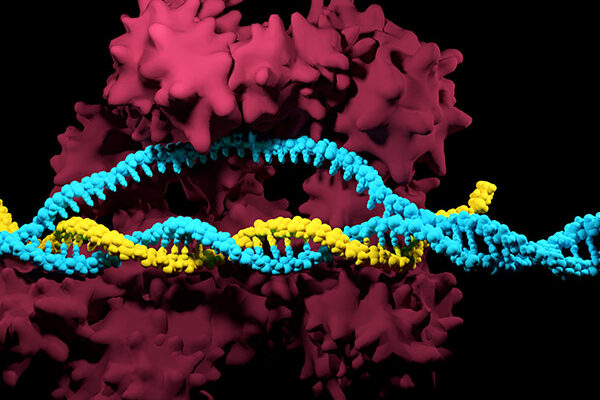Methods for use in extracellular vesicle (EV), including exosomes, isolation and engineering applications broadly encompassing EV manufacturing, therapeutic, medical and diagnostics uses.
Proposed uses
- EV isolation reagents for industrial R&D or commercial products such as kits.
- Integration within EV manufacturing processes for cost-effective, scalable EV engineering and therapeutic EV manufacturing.
- Therapeutic EV engineering (fusion proteins for EV surface display).
- EV diagnostics- e.g., detecting EV-associated proteolytic biomarkers for various indications.
Problems addressed
Extracellular vesicles (EVs), including exosomes, are lipid-membrane nanoparticles that are naturally shed or secreted by many different cell types, and EVs have important roles in cellular behaviour, health and disease. However, current limitations in EV heterogeneity understanding (biogenesis, composition, cargoes and morphology), as well as the nascent development of EV engineering or isolation technologies are impacting the progression of next generation EV therapeutics, drug delivery vehicles, and diagnostics towards the clinic and patients. Current isolation EV techniques such as ultracentrifugation or antibody beads, are marred by inefficiencies, like aggregation, and co-isolation of contaminants, debris, and low recovery rates or isolation of mixed EV populations. Solving these aforementioned bottlenecks could further accelerate a rapidly growing EV market that already features multiple $1bn strategic deals in the EV pharmaceutical and diagnostic spaces e.g., developing clinical-grade EV tumour-associated diagnostics, nanovesicle therapeutics or drug delivery. Likewise, stem-cell, cultured meat and other cell biomanufacturing companies are exploring EV manufacturing as a potential additional revenue stream from their platforms in downstream therapeutic, medical or cosmetic applications.
Technology overview
The invention describes microbial strains that have been engineered to manufacture principally including but not limited to functionalised polyhydroxyalkanoates (PHAs)-based biopolymer particles of varying lengths. Methods include isolating biopolymer(s) from production strains, preferably microbial cells, and downstream EV applications. Functionalised biopolymer particles incorporate engineered and highly modular fusion proteins on their surface that are customisable for different EV isolation, engineering or diagnostics applications. Embodiments of the core technology include:
- Use of PHA-biopolymers, among others such as poly(L-lactide) (PLLA), a polyethylene (PE), a polystyrene (PS), porpolythioester (PTE).
- Affibody or peptide funtionalised biopolymer particles for immunocapture of EVs from cell culture media. Incorporation of protease recognition motifs for gentle EV release or EV proteolytic biomarker detection (e.g., metalloproteinases in cancer)
- Integration of GFP as an exemplar to facilitate its display on isolated EV surfaces, post proteolytic release.
Please see patent, and lead inventors listed manuscripts or contact Imperial Enterprise for further technical details.
Benefits
- Low-cost production of functionalised PHAs biopolymer particles from a single microbial strain.
- Polyhydroxylkanoates (PHAs) are natural biopolymers that are biodegradable and biocompatible making them highly suited for clinical applications.
- Functionalised PHAs biopolymer particles incorporate highly modular fusion protein designed to facilitate EV isolation, engineering and diagnostic applications.
- Isolation of EV subtypes coupled with gentle proteolytic EV release, and methods covering cell-free isolation.
- Scope for displaying bespoke fusion proteins on proteolytically released EVs.
- Scope for coupled EV isolation and EV engineering which could streamline therapeutic EV manufacturing workflows.
- Biopolymer compatibility with bead technology, and translatability for reagents, kits for medical use and biological research.
Intellectual property information
The IP portfolio owned by Imperial College London and managed by Imperial Enterprise includes:
- Patent asset: Method for isolating extracellular vesicles
GB priority patent filing completed on 24/09/19, entering PCT Stage 23/09/20 (PCT/GB2020/052302/ WO2021058950A1). National entry and substantive examination pursued in EPO (EP4034646A1), USPTO (US20220356269A1), APO (AU2020354608A1). - Know-how and expertise
Regarding manufacturing and engineering of PHA-based biopolymer particles and EV applications. Consultancy projects can be arranged, via ICON, to facilitate pilot testing of the technology prior to licencing, custom biopolymer functionalisation or bespoke application development towards client specific requirements.





